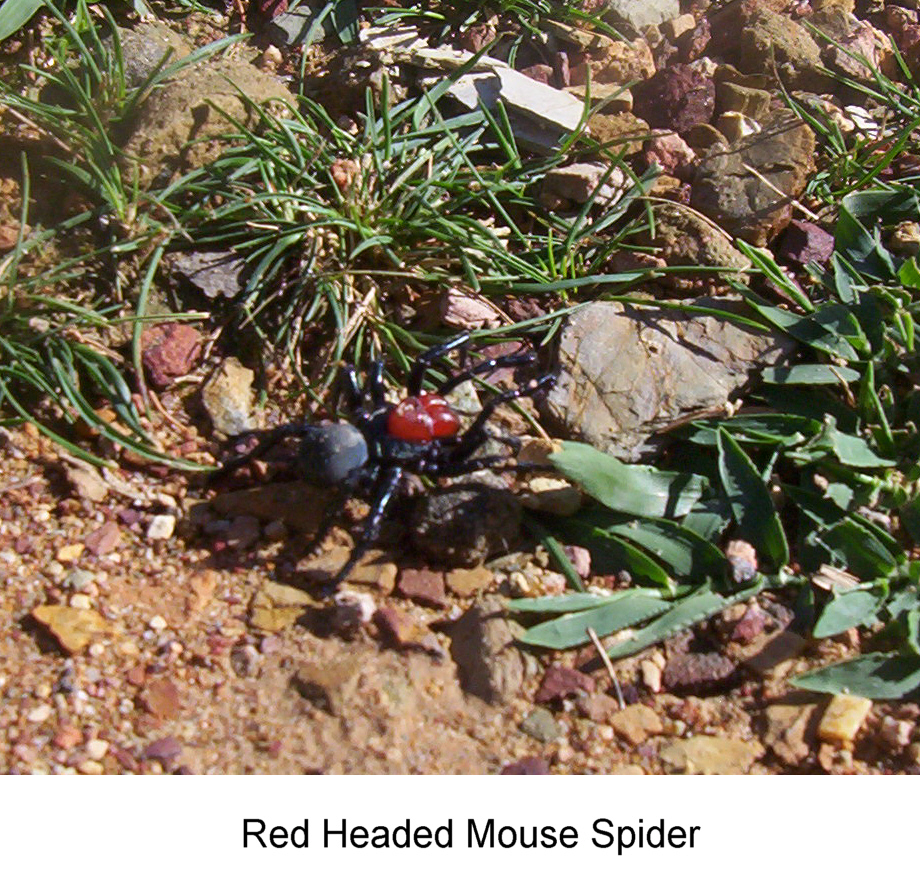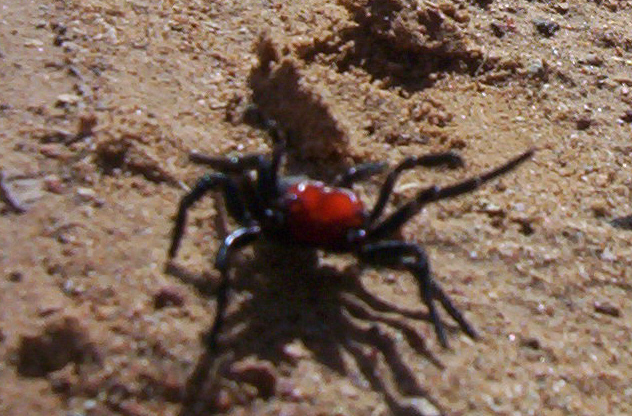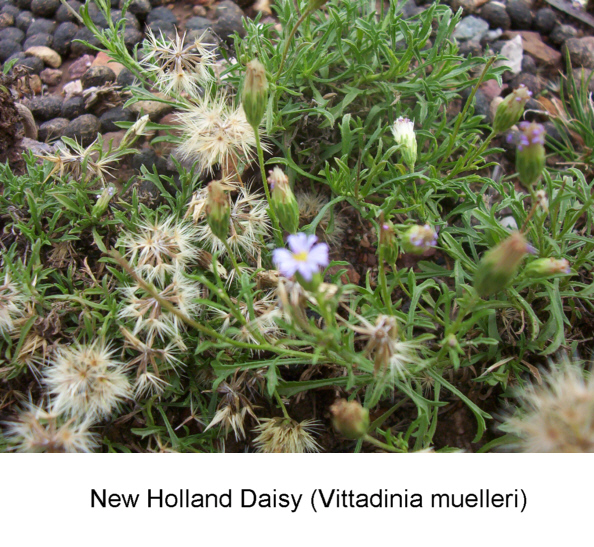
Wild Windellama
by Paul Alessi
June 2007
Red-headed Mouse Spider (Missulena occatoria)
Seen wandering
about our place right after the rain last month was a large black
spider
resembling a funnel web but with a bright red head, this was a
male headed Red-headed Mouse Spider.
I have seen these spiders before but not very often, unlike the
funnel web, mouse spiders
go wandering during the cooler time of the year and again unlike
the funnel web they prefer to
seek out their females during the daytime. This little fella was
on a mission to find a mate and
wouldn't keep still to have his photo taken, so apologies for the
fairly ordinary pictues of him,
he also reared up in a threatening gesture which I took seriously
as the bite from one of these
spiders is potentially as dangerous as the bite of a funnel web
spider.
Missulena occutoria
are one of eight recognised species of mouse spiders, all of whom
dwell in
burrows up to 30cm deep with an oval opening , like trap-door
spiders, the mouse spider's
burrow has a lid. They do prefer to mate in the cooler months so
it's wise to check your
shoes for spiders ALL YEAR ROUND, if bitten by any spider like
this you should seek
immediate medical help.
Of course to see
the Red-headed mouse spider with his spectacular bright red head
in colour
you should go to the Wild Windellama website.


New Holland Daisy
(Vittadinia muelleri)
In flower and seed
at the moment is the New Holland Daisy, they are a ground,
cover found on harsher clay sites in semi open woodland so they
are very hardy. They have
attractive purple daisy like flowers. The genus Vittadinia
comprises 29 species,
most of which are native to Australia.
The small purple
daisy flowers give way to a fuzzy ball of feathered seeds
( one common name for them is the not so glamourous
name"Fuzzweed" ) and the plants
can have both flowers and seeds at the same time, they are also
not that fussy as to
when they will flower and this is probably more a response to
rain than a seasonal factor for them.
I'm not sure if
stock eat them or not but fairly certain that native animals
don't touch them,
they are very attractive plants and rumoured to grow easily from
seed.
Please check out the colour photos of New Holland Daisy on the Wild Windellama website.

Copyright
Paul Alessi 2007